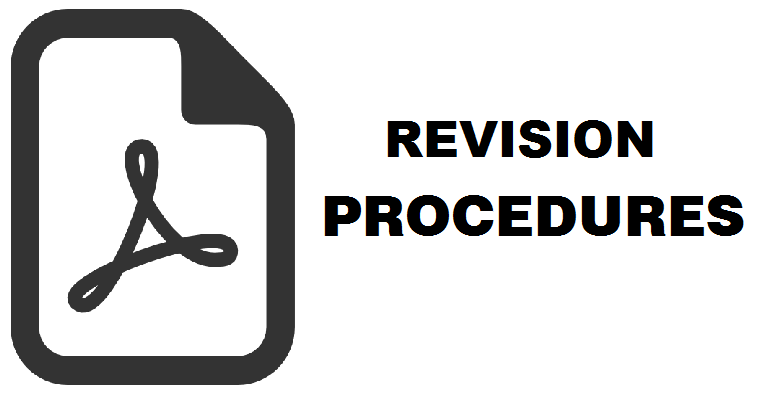User Experience (UX) dalam pemanfaatan fasilitas Informal Learning Space (ILS) perpustakaan
Janu Saptari(1*), Rini Iswandari(2), Ratna Setyawati(3)
(1) Perpustakaan Universitas Gadjah Mada, Yogyakarta
(2) Perpustakaan Universitas Gadjah Mada, Yogyakarta
(3) Perpustakaan Universitas Gadjah Mada, Yogyakarta
(*) Corresponding Author
Abstract
Introduction. User experience (UX) is often used as a consideration to measure the quality of library services related to the provision of other facilities and services. The provision of reading room service and informal learning space (ILS) is space in cafeteria, park, hall, lobby, and special room available in certain area. Utilization of ILS facilities needs to be measured for success based on user experience.
Data Collection Method. The research was conducted by collecting questionnaires data and interview approach toward user population of ILS facility. The specified population is the user who is using the ILS facility in various areas available for one month.
Data analysis. The data are included in the excel tabulation for further processing. Data from the excell tabulation were analyzed based on the research construct. From the analyzed data obtained an overview of the experience of utilization ILS library facilities.
Results and Discussions. ILS facilities are used for study/academic activities. Frequency of use of ILS every day with a duration longer than 4 hours. Reasons for using ILS due to the availability of internet access. Opinion on the use of ILS due to convenience and more productive.
Conclusion. The ILS utilization is due to the fact that internet facilities, comfort, and work are more productive, so ILS facilities are used every day for a long time.Keywords
Full Text:
PDFReferences
Bevan, N., Carter, J. & Harker, S.S. (2015). ISO 9241-11 revised: What have we learnt about usability since 1998?. Human Computer Interaction, Part 1. Diakses 11 September 2017, dari https://pdfs. semanticscholar.org/.
Brown, M.B. & Lippicott, J.K. (2003). Learning spaces : More than meets the eye. Educause. Diakses 20 Maret 20017, dari http://net.educause.edu/
Burn, K. et al. (2016). Capturing the student user experience (UX) in York and Loughborough University Library buildings. Performance Measurement and Metrics, 17(2), 175-187. DOI 10.1108/PMM-04-2016-0021
Conlon, T. (2003). A review of informal learning literature, theory and implications for practice in developing global professional competence. Journal of European Industrial Training, 28(2/3/4), 283-95. Diakses 11 September 2017, dari https:// media.proquest.com/
Cunningham, M. & Walton, G. (2016). Informal learning spaces (ILS) in university libraries and their campuses: A Loughborough University case study. New Library World, 117(1/2), 49-62. DOI 10.1108/NLW-04-2015-0031
Educause. (2011). 7 things you should know about the modern learning commons. Diakses 11 September 2017, dari https://library.educause.edu/.
Eraut, M. (2000). Non-formal learning and tacit knowledge in professional work. British Journal of Educational Psychology, 70, 113-136. Diakses 20 Maret 2017, dari http://old.mofet.macam.ac.il/iun-archive/mechkar/pdf/Non-formalLearning.pdf.
Harrop, D. & Turpin, B. (2013). A study exploring learners informal learning space behaviors, attitudes, and preferences. New Review of Academic Librarianship, 19(1), 58-77. DOI: 10.1080/13614533.2013.740961
Hunter, J. & Cox, A. (2013). Learning over tea! Studying in informal learning spaces. New Library Worl, 115( ½), 34-50.
Jamieson, P. (2016). Reimagining space for learning in the university library. User Experience in the Library. Diakses 11 September 2017, dari https://www.crcpress.com.
Jobs, S. (1997). World wide developers conference. Diakses 11 September 2017, dari https://en.wikiquote.-org/wiki/Steve_Jobs.
Kumar, A. & Bhat, R.K. (2015). A study of using informal learning spaces at Indian Institute of Technology, Delhi. Library Philosophy and Practice (e-journal). Paper 1239. Diakses 20 Maret 2017, dari htp://digitalcommons.unl.edu/libphilprac/1239.
Margono, S. (1997). Metodologi penelitian pendidikan. Jakarta: Rineka Cipta.
McArthur, J.A. & Graham, V.J. (2015). User-experience design and library spaces: A pathway to innovation? Journal of Library Innovation, 5(2). Diakses 5 Oktober 2017, dari https://sites.google.com/site/journaloflibraryinnovation/vol-6-no-2-2015.
Nawawi, H.H. (1998). Metode penelitian bidang sosial. Yogyakarta: Gama Press.
Allanwood, G. & Beare, P.B. (2014). User experience design: Creating design users really love. London: Bedford Square. Diakses 20 Maret 2017, dari https://books.google.co.id/.
Prasetyawati, R.S. (2016). Kepuasan mahasiswa terhadap ruang belajar terbuka di Universitas Negeri Yogyakarta (Skripsi). Yogyakarta: Fakultas Ilmu Pendidikan UNY.
Richardson, S. (2004). Employers’ contribution to training, NCVER, Adelaide. Diakses 11 September 2017, dari http://www.sapo.org.au.
Riduwan (2004). Metode dan teknik menyusun tesis. Bandung: Alfabeta
Riesmaya, V. (2013). Dimensi kualitas ruang perpustakaan. Diakses 27 Maret 2017, dari http://journal. unair.ac.id/.
Santosa, S. (2008). Metode penelitian biomedis 2. Bandung: Danamartha Sejahtera Utama.
Soewadji, Y. (2012). Pengantar metodologi penelitian. Jakarta: Mitra Wacana Media.
Undang-undang Republik Indonesia no. 43 tahun 2007 tentang Perpustakaan.
Wikipedia (2016). User experience. Diakses 22 Maret 2017, dari https://en.wikipedia.org/
Zuriah, N. (2006). Metodologi penelitian sosial dan pendidikan: Teori dan aplikasi. Jakarta: Bumi Aksara.Article Metrics
Refbacks
- There are currently no refbacks.
Copyright (c) 2018 Berkala Ilmu Perpustakaan dan Informasi

This work is licensed under a Creative Commons Attribution-ShareAlike 4.0 International License.











